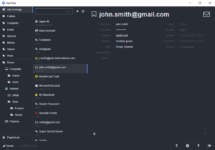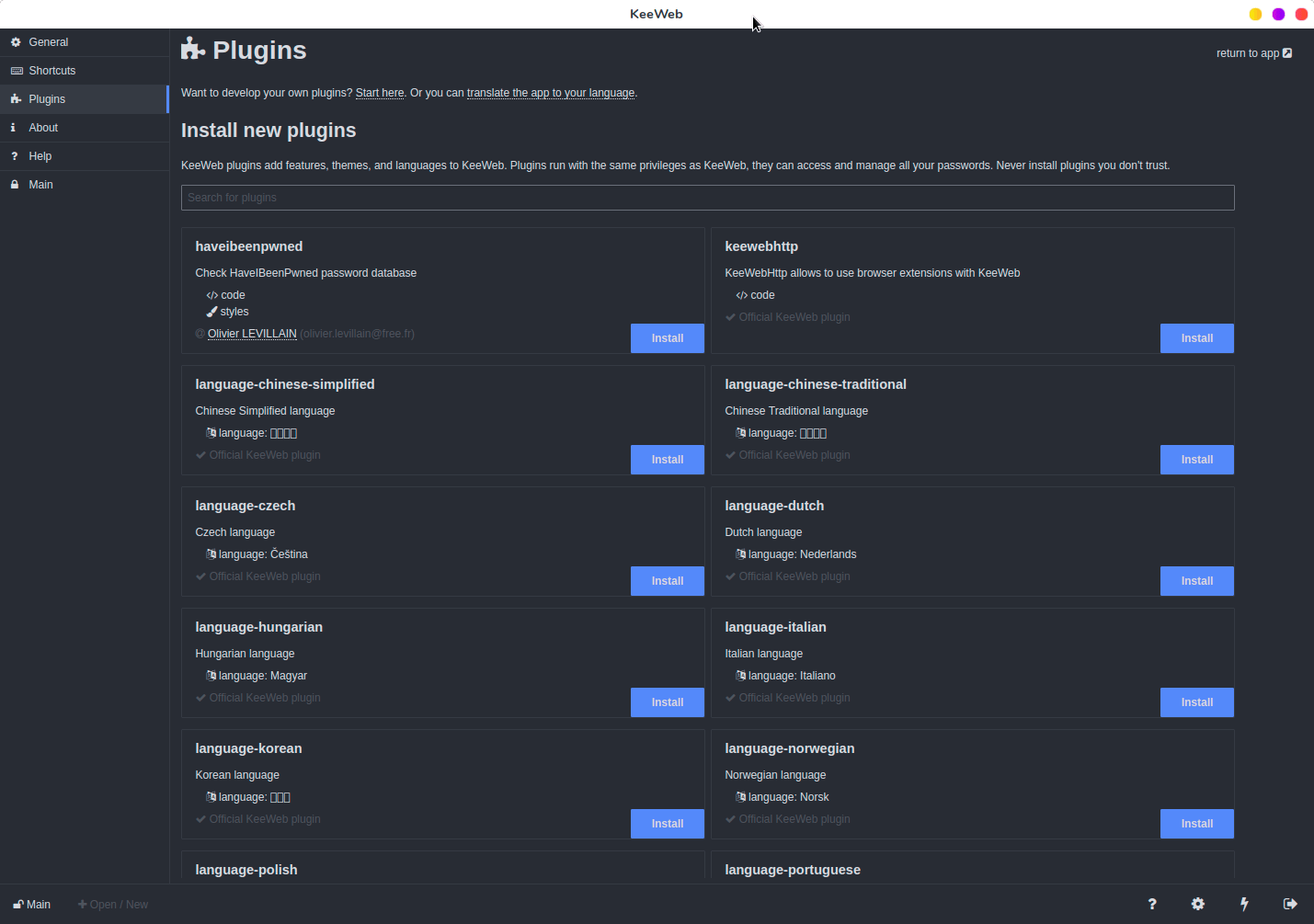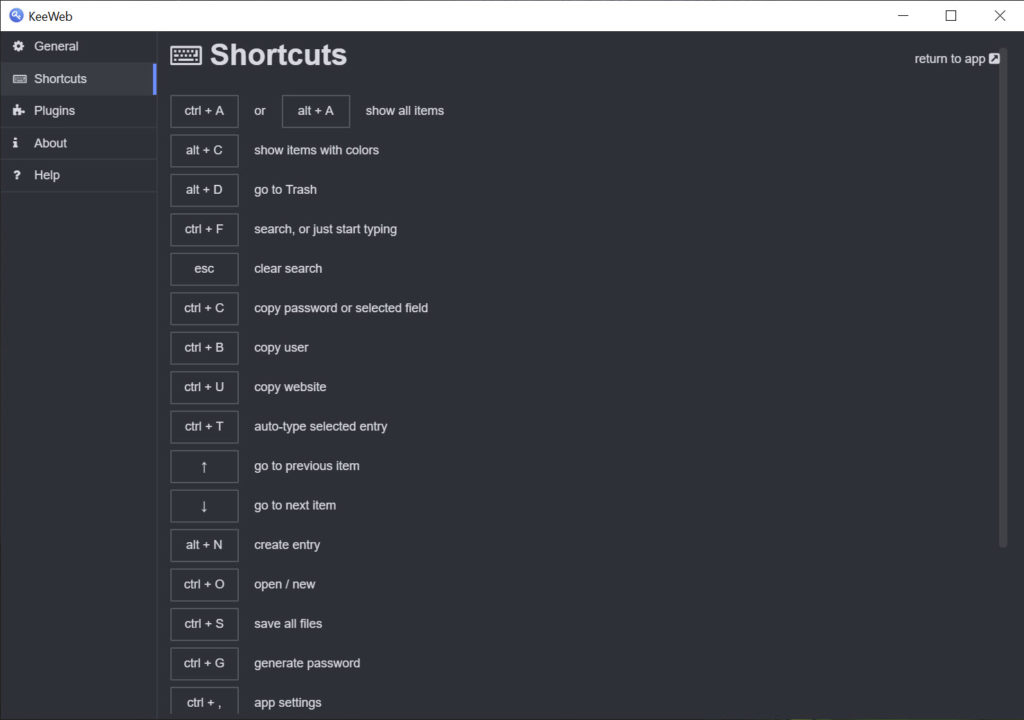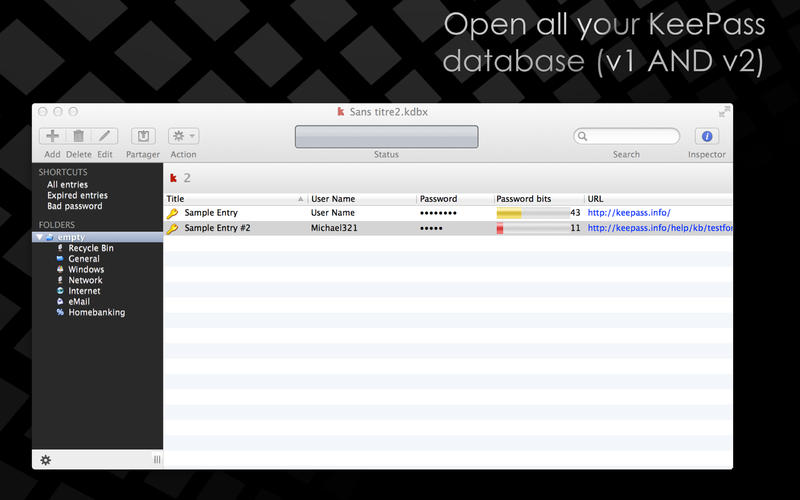

- KEEWEB IMPORT UPDATE
- KEEWEB IMPORT MANUAL
- KEEWEB IMPORT PASSWORD
- KEEWEB IMPORT OFFLINE
- KEEWEB IMPORT MAC
Therefore, the only purpose of self-hosting KeeWeb is self-hosting your password database file (. However, the case of KeeWeb is specific because it has no server-side : it only consists in a progressive web app ( Wikipedia) with front-end features.

Well-known examples of self-hostable services are WordPress for blog editing and Nextcloud for file sharing. Self-hosting consists in hosting a service on the user's own server.
KEEWEB IMPORT MAC
KeeWeb is available via web browsers on all platforms including mobile, and also featured as an Electron ( official website) app on Windows, Linux and Mac operating systems.
KEEWEB IMPORT OFFLINE
KeeWeb ( official website) is a web-based implementation of KeePass ( official website), an open source and offline password manager. You may see instances of multiple logins appearing on one line during step 6 of the import process (the import data preview).How to self-host KeeWeb Introduction to KeeWeb Multiple Entries on One Line in Import Data Preview This will require going through the CSV file exported from KeePass and manually updating any passwords similar to above, switching any instance of \" to " ( NOTE: Don’t use find and replace! This could inadvertently break situations where quotes have correctly been escaped such as in notes). If you’ve only just migrated to 1Password or believe that this issue might affect a large number of different entries you can fix the initial data set and re-do the import.
KEEWEB IMPORT UPDATE
The fastest way to resolve if you have already started using 1Password or the number of affected items is low is to update any failing entries in 1Password itself by checking the password text and switching any instance of \" to " (removing the backslash). This most likely points to a situation where your original password contained a quote (for example abc"123) which was then escaped by the KeePass export process (converting the above example to abc\"123), leading to issues logging in since the password is no longer correct. One of the scarier issues you might run into is finding that your passwords appear to be wrong when logging into services using the details stored in 1Password. This presents itself in a couple of ways: Broken Logins The CSV export from KeePass escapes quotation marks (converting " to \") and the 1Password import process doesn’t always handle this very nicely. Enjoy 1Password! Fixing Data Import Issues Go through any of the items that you modified and fix the notes!Īnd now you’re done.

Your data should now be imported! There are a few things that are worth doing before you consider the process complete though:

KEEWEB IMPORT MANUAL
Yeah, as you can imagine that’s not a great solution.Īnyway, I wanted to move over to 1Password but when I tried searching for “Migrate KeePass to 1Password” I kept seeing references to 3rd party scripts I’d need to use to convert my exported data (no thanks) or that it would require a bunch of manual data entry. KeePass is an excellent (open source!) piece of software, but since it stores passwords in a single database file the only way that I could really sync it between multiple computers and my phone was to store that file… in Dropbox. I’ve been using KeePass for my password management needs since early 2014, but I recently decided that I wanted to move to something a bit more substantial.


 0 kommentar(er)
0 kommentar(er)
